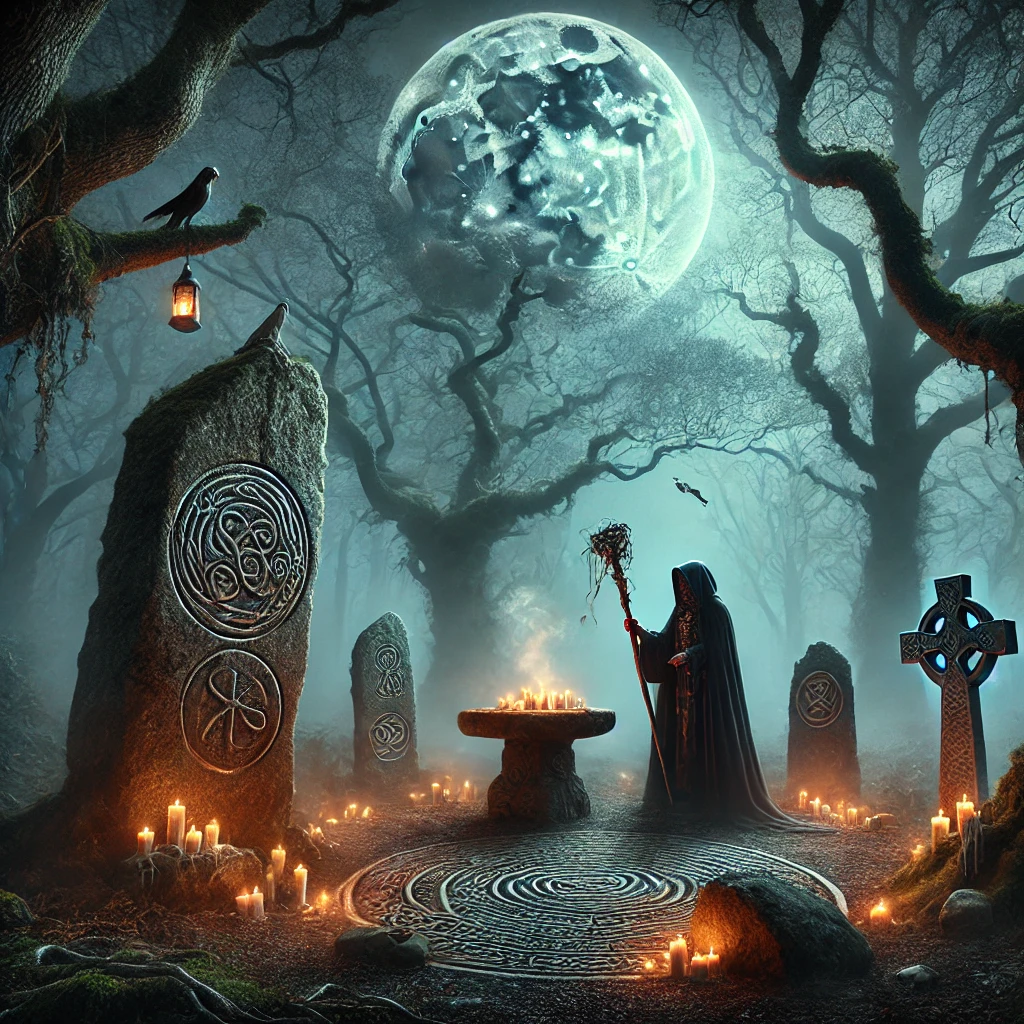In the mists of ancient Celtic lands, where the oak and ash trees reached skyward, and the rivers flowed with stories of old, the art of curseology was more than mere superstition. The Druids, revered mystics and keepers of ancient knowledge, were known for their understanding of nature’s secrets, wielding powers that straddled the line between blessing and curse. Among them were those who practiced a rare and feared branch of magic known as the Geis—a type of Celtic curse believed to bind, guide, or destroy.
The Geis was no ordinary hex; it was a sacred, moral weight that rested on the one it bound. Legends spoke of powerful warriors and chieftains sworn to a Geis laid upon them by a Druid, each curse unique and intertwined with destiny. For some, the curse took the form of an oath, forbidding them from certain acts under pain of spiritual ruin. For others, it was a restriction of movement or action that, if broken, would summon swift retribution.
In the lore of the Tuatha Dé Danann—the mythic tribe of the Celtic gods and fair folk—Geasa were known to control fates as much as they protected or destroyed. One story told of Diarmuid, a hero bound by the Geis that he must never harm a boar. But when his love and life depended on breaking it, he chose to disregard his binding, only to fall under the curse’s power, leading him to an early death, foretold by the very geis he sought to defy.
The art of curseology in these times was not limited to warriors and kings; it found its way into the lives of ordinary villagers as well. A Druid might curse a thief to forever lose his sense of direction, leaving him perpetually lost and unable to find his way home. Another might bind a family line with a generational curse, placing a burden upon them until they righted a past wrong or reconciled with a betrayed spirit.
The Druids’ cursing rites were often shrouded in secrecy, performed deep within sacred groves or by moonlit cairns, where they invoked the elements and spirits of the land. The ritual required blood, often in the form of symbolic sacrifices, not to the gods but to appease the forces of the curse itself. Stones, carved with ancient Ogham script, would be hidden in places associated with the curse’s target—buried near a home or tossed into a well. As long as these stones remained undisturbed, the curse held power.
But curseology in Celtic culture was not entirely a tool of vengeance. The Druids believed curses could guide wayward souls, teaching them humility, gratitude, or respect for the earth. For them, a curse was a lesson wrapped in mystery, a mark placed upon the spirit. To break a curse, one had to demonstrate wisdom, honor, or, in some cases, perform a deed that pleased the spirits or gods who had been offended.
In the end, the curse was a powerful reminder of the forces that governed life and fate, a mysterious binding that tied the spirit of the living to the ever-watchful eyes of the unseen world. The Celtic and Druidic curse was an oath, a geis, a binding that wove together past, present, and future—a story as lasting as the stones on the ancient lands and the trees that bore silent witness to every spell spoken under the starlit skies.
